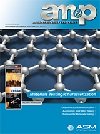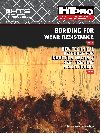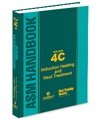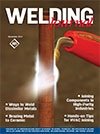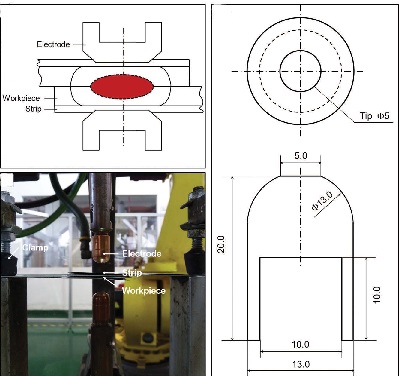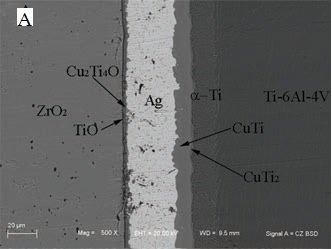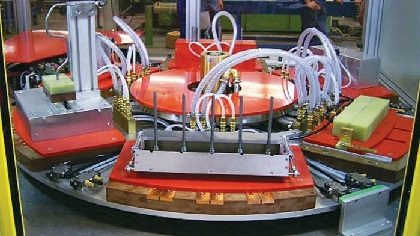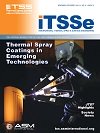| Back to Back Issues Page | |||||||||||||||||
 |
|||||||||||||||||
|
PWL#136, ASM Hdbk 4C, consumable tape in RSW, Amorphous Braz. Filler, Induct. Brazing, Direct Write December 01, 2014 |
|||||||||||||||||
| We hope you will find this Letter interesting and useful. Let us know what you think of it.
PWL#136 New ASM Handbook Volume 4C, Inserted strips in Resistance Spot Welding, Amorphous Filler Metal for Vacuum Brazing Ceramics to Titanium, Controlled-Atmosphere Induction Brazing, Direct Write Technology, Weld-design-review (NEW), Bulletin_102 (NEW) Resources on Review of Weld Design, and much more...
December 2014 - Practical Welding Letter - Issue No.136
Important NoticeDON'T USE
REPLY to send your messages! Use the Contact Us form instead. The Mid November 2014 Issue of Practical Welding Letter, Bulletin 102, introducing online Resources on Weld Design and Review was not distributed by e-mail but is available at Bulletin 102 and from the Welding Resources Page. This publication brings to the readers practical answers to welding problems in an informal setting designed to be helpful and informative. We actively seek feedback to make it ever more useful and up to date. We encourage you to comment and to contribute your experience, if you think it may be useful to your fellow readers. Click on Contact Us and fill in the Form. You are urged to pass-along this publication to your friends, if you like it, and if you think it may help them. If you received this from a friend and if you like what you read, please Subscribe free of charge and you will also receive a bonus book on Practical HARDNESS TESTING Made Simple. The addresses reported hereafter were live and correct at the time of their publication. There is no guarantee that they will always be so, because they are administered by the sources themselves and are under their control. If they are URL's (Uniform Resource Locator), which is the analogue of an address, they begin with "http://..." or "www.". These are not live and must be copied and pasted entirely into the browser (after having been selected with the mouse or otherwise). If they are long they may be displayed in two or more lines. In that case one has to care that the URL be copied completely in a single line without any space, and Enter. If the information is important to you as we hope, you may save the selected pages in a suitable folder on your Computer for easy reference. You are welcome to forward this page to those of your friends who may profit of this information. (Sponsored Links)
1 - Introduction 2 - Article - ASM Handbook Volume 4C 3 - How to do it well: Inserted strips in Resistance Spot Welding 4 - Amorphous Filler Metal for Vacuum Brazing Ceramics to Titanium 5 - Online Press: recent Welding related Articles 6 - Terms and Definitions Reminder 7 - Article: Controlled-Atmosphere Induction Brazing 8 - Site Updating: Weld-design-review (NEW), Bulletin_102 (NEW) 9 - Short Items 10 - Explorations: beyond the Welder 11 - Contributions: Direct Write Technology 12 - Testimonials 13 - Correspondence: a few Comments 14 - Bulletin Board
2 - Article - ASM Handbook Volume 4C: Induction Heating and Heat Treatment
Those who are familiar with ASM Handbook series know that they are irreplaceable fundamental reference books. This ALL NEW ASM Handbook gives design, manufacturing, and material engineers a practical and comprehensive reference on the technologies and applications of induction heating and heat treatment. Much of the content in the 62 articles of this handbook has not been published before. In its more than 800 pages, the book provides practical knowledge, technical procedures, guidelines, and good practices to enable the principles application in solving real life problems. In the downloadable publication pointed at further down, a well informed introduction, written by Dr. Valery Rudnev, main contributor and editor, describes the breadth and the depth of this new technical resource as the result of an ambitious undertaking to compile an all- new, comprehensive resource on induction thermal processes. In a few pages of text the author presents the main subjects treated and their importance in planning for industrial implementation of specific applications. He explains that "Several articles introduce novel technologies and know-how that enable minimizing part distortion dramatically after heat treating, which potentially could lead to elimination of secondary operations such as straightening". He goes on, reporting that "A critical review of ASTM and SAE standards and guidelines for properly measuring hardness of the case and heat affected zone, is included". The presentation lists main topics, like Case Studies, Analysis of Residual Stresses, Selection of Critical Process Parameters, Review of Inductor Designs, Failure Analysis and Prevention, and typical Defects. "One article in this handbook aims to clarify the subject of effects of EMF exposure on health, by reviewing key concepts regarding occupational exposure to electromagnetic fields encountered in industrial activities, of which professionals should be aware." Readers are encouraged to read this introduction from page 11 of the HTPro (or pg 45 of AM&P), the official publication of the Heat Treating Society (HTS) of ASM International, provided as a supplement to the November-December 2014 issue of Advanced Materials and Processes (AM&P), published by ASM International and available online from http://www.asminternational.org/documents/10192/22857245/amp17211p33.pdf
Readers can read also the thorough description of the publisher at: The first 14 pages including the complete Table of Contents can be downloaded. A sample Chapter, Principles of Induction Hardening and Inspection The book hardcopy or the CD can be ordered directly from ASM. Members enjoy a discount. See also the article in Section 7 below.
3 - How to do it well: Inserted strips in Resistance Spot Welding
In January 2010, in our Practical Welding Letter No.77 in section (4), an Article was published titled Consumable Process Tape for Spot Welding. Click on PWL#077 to see it. It described a new commercial application developed to protect spot welding electrode tips while welding aluminum sheets employed in the fabrication of car bodies. We are reminded of that use by a new article, titled Effect of Inserted strips on Electrode Degradation in Resistance Spot Welding, published in the last issue of the Welding Journal for November 2014 at page 411-s. The present study explores the use of different strip materials to optimize electrode tip life between dressing operations, while spot welding thin galvanized steel sheets for the manufacture of modern car bodies. The study is most thorough, and it reports a long list of published literature on the subject. In particular it explains in detail by what means the progressive degradation of the electrode tips was investigated and how the performance of the different strip materials was evaluated. The conclusion of the authors is that, for the application sought, the best strip material is a copper alloy including Nickel, designated Cu55Ni45. Its use contributes to reduce the electrode tip temperature reached when spot welding, and has the least impact on hardness/strength and electrical conductivity of a copper electrode. Interested readers are urged to download the indicated article (10 pages) from They may wish to test putting to use the lessons learned, even in less automated set-ups, for increasing the useful electrode tip life between dressing operations. We will gladly report on the successful results of those readers who will implement the proposed development in their fabrications and care to inform us of their experience.
Picture from the AWS Welding Research Supplement pointed at above.
4 - Amorphous Filler Metal for Vacuum Brazing Ceramics to Titanium
An Article published in the November 2014 issue of the Welding Journal at The use of amorphous brazing filler metal foil with good glass forming abilities, is suggested by recent results of other investigations, as reported by the article. In particular residual stresses in the joint are reduced, resulting in improved strength. Furthermore clearance requirements are reduced while ductility and flexibility are improved. Ti-based amorphous filler metals, which offer low density, high specific strength and relatively low cost, achieved much higher bonding strength than that obtained by using a crystalline filler metal. In the reported study, ZrO2 is brazed to the Ti-6Al-4V alloy using a Ag53Cu41Ti6 amorphous solder. The investigation demonstrates that the microstructural evolution and mechanical properties are remarkably dependent on brazing conditions, such as temperature, heat time and cooling rate. The article concludes that the maximum shear strength of 178 MPa was achieved based on the optimal parameters: brazing temperature of 1123 K (850 °C), heat time of 10 min, and cooling rate of 5 degrees per minute. Interested readers are urged to seek the original article indicated above.
Microstructure of Brazed joint for heat time = 5 min
<
5 - Online Press: recent Welding related Articles Laser welding, additive manufacturing enable equipment refurbishments with less effort The new Competence Center Welding (CCW) of voestalpine Schienen GmbH FCTC women push misconceptions of welding to the melting point How is welding safety looking? The driving force behind welding
6 - Terms and Definitions Reminder Face Bend Test is a bend test on a welded specimen where the weld face is on the convex surface of a specified bend radius. Gas Tungsten Arc Cutting Torch is a device used to transfer current to a fixed nonconsumable cutting electrode, position the electrode and direct the flow of the shielding and cutting gas. Horizontal Welding Position, fillet weld, is one running horizontally on the upper side of an approximately horizontal surface, in the corner between that and an approximately vertical surface. Influence of Magnetic Fields on Arcs are the effects produced by the interaction of those magnetic fields with the arc current, generally in the form of detrimental arc deflection. Mechanical Fastening is a set of alternative processes providing joining of mechanical parts without resorting to heating which is generally associated with welding and brazing. Overlaying is a non standard term used instead of surfacing. Piping Porosity is a form of discontinuity displaying cavities having length greater than width. Reaction Soldering is a process variation in which a reaction flux is used for soldering.
7 - Article: Controlled-Atmosphere Induction Brazing
A recent article, bearing this title, was recently published at page 58 in the November 2014 issue of the Welding Journal. It opens with a reminder of general basic information, stressing the importance of cleanliness and of proper clearance control. Then it explains the induction heating theory and covers in some detail induction coil design principles and practice. It further describes the principles for designing correctly induction fixtures in view of implementing production automation. Finally the article emphasizes the advantages of using protective atmosphere for performing fluxless brazing. This can be achieved by having the parts enclosed in suitable containers filled with inert gas, or by providing a continuous flow of such a gas around the heated area during the heating part of the process. Every definite application requires the most suitable solution depending on the details of the assembly and on production requirements. The key advantages of induction brazing technology are, as exposed in the article, noncontact heat transfer, excellent process repeatability, high efficiency, and rapid rate of heating. Long-term energy savings, high part quality, safety, and process control highlight the features of this technology, which is now gaining momentum in many different industrial environments. Interested readers are urged to seek the original reported article and to review the section (2) above.
Six-station automated-indexing dial system for induction shield gas brazing of multiple stainless steel tube and fitting assemblies simultaneously at each location.
8 - Site Updating: Weld-design-review, Bulletin_102 The Pages of this Month deal with the good habit of submitting all new drawings calling for welding, to the professional review of someone with experience, capable to point at possible problems in production. It should not come as a surprise that welding professionals are often disappointed by occasionally seeing welding drawings including questionable details, or plain errors that, if not caught in time and if implemented without correction, will probably cause unnecessary delays and costly avoidable waste. While the motives to seek some professional help seem strong and logic to any uninvolved observer, the opportunity to do so is often misunderstood and waived for wrong reasons or for ignorance of the facts. So much so as design review will entail some delay and come at some expense. The prospected savings and gains dues to error correction should generally justify the recommended precaution of performing design review. But not all managements have the wisdom to foresee looming risks, unless after being burnt by painful experience. The new page recently published in our website quotes the recommendations of the American Welding Society to the general public of designers encouraging them to look for professional opinions on welding subjects whenever suitable. It is hoped that this page on Weld-design-review will shed some light on the subject and will help prevent costly mistakes. On the same matter, it may be useful to search additional online References with Resources on Weld Design and Review, listed in our new Mid Month Bulletin 102, by clicking on this link. Especially when facing unexpected production problems, smart readers should check if welding professionals might be able to help them overcome the difficulties.
9 - Short Items 9.1 - Proof Load is a predetermined load, generally some multiple of the service load, to which a specimen or structure is submitted before acceptance for use. 9.2 - Rotary Swaging is a bulk forming process for reducing the cross-sectional area or otherwise changing the shape of bars, tubes, or wires by repeated radial blows with one or more pairs of opposed dies. 9.3 - Supersaturated is a metastable solution in which the dissolved material exceeds the amount the solvent can hold in normal equilibrium at the temperature and other conditions that prevail. 9.4 - True strain is the ratio of the change in dimension, resulting from a given load increment, to the magnitude of the dimension immediately prior to applying the load increment. 9.5 - Winning means recovering a metal from an ore or chemical compound using any suitable hydrometallurgical, pyrometallurgical, or electrometallurgical method. 9.6 - X-Ray Photoelectron Spectroscopy (XPS) is an analytical technique that measures the energy spectra of electrons emitted from the surface of a material when exposed to monochromatic x-rays.
10 - Explorations: beyond the Welder Life on the Volcano Is Increasingly Tough for These Hawaiian Birds Watch the Record-Setting Flight of "Atlas," the Human-Powered Helicopter 7 Solutions to Climate Change Happening Now Are Scientists on "Cusp of Knowing" How Weird We Are? Congress’s "Rocket Scientist" to Take Helm of World’s Largest Science Organization
11 - Contributions: Direct Write Technology
An Article printed at page 55 in the International Thermal Spray & Surface Engineering (ITSSe), presented as an insert into the November-December 2014 Issue of Advanced Materials and Processes (AM&P), published by ASM International, provides the highlights of the new process described by the title of this note. The title of the original article, Smart Deposition Process Integrates Sensors and Heaters into Coatings summarizes its capabilities. The technology, promoted initially by a partnership including the Defense Advanced Research Projects Agency (DARPA), academy and commercial enterprises, has been in development since 2002 for use in aerospace, military, and energy markets. As the interesting article can be read by anyone as explained hereafter, only a few characteristic uses will be introduced here. Low profile, fine feature conductor patterns and ceramic dielectrics can be written onto critical components. Direct write printing is used to build aerospace components by enabling embedded circuitry. In high temperature propulsion systems it permits incorporating diagnostic sensors (temperature and heat flux) for structural health monitoring. The technology has also been used to integrate UHF/VHF/L-Band antennas into air and space vehicle components for advanced communications and signals intelligence. Among the most popular applications, printed thermocouples can be embedded into the most significant spots of the component with oxidation protective coating if necessary. Continuous temperature monitoring permits process control using closed loop software. Similar arrangements with several thermocouples permit to measure directly the heat flow for optimal control system implementation. Heaters can be printed in place with thickness control and precision patterning for optimal heat generation, transfer and control. Conductors can be precisely laid in place, to connect thermocouples or to feed heaters. The same technology is used to fabricate antenna patterns onto air vehicle structures. As structural electronics is viewed as a rapidly growing business, applications become feasible with direct write technology that provides a cost-effective method to produce smart structures by integrating sensors and heaters within coatings. Download the following: Read and enjoy at page 5 of this insert (or pg 55 of AM&P) the original article indicated above.
Picture from the iTSSe publication pointed at above.
12 - Testimonials Fri Nov 07 09:37:20 2014 Name: Thomas T. Haig Thank you.
Fri Nov 14 11:47:19 2014 With Regard’s Anil Gupta (M.D)
13 - Correspondence: a few Comments At this time of the year Correspondence is becoming scarce. People are busy with their own business and cannot find time apparently, for writing a question. It is a pity because, from my experience, there are always many unanswered questions that could help streamlining operations or procedures. Enquirers simply do not appreciate how much they could gain by asking for a professional opinion or for straight advice. From some of the questions received in the past it is understood that readers did not take the time, before asking, to search their question using the tools provided by this site. It is a pity, because a lot of information is available to all. Just Search this website with your own terms or by browsing the Site Map or the Index Page to find what would help you. Or use the Contact Us form to ask your question. Cheers.
14 - Bulletin Board 14.1 - International Conference on Mechanics and Civil Engineering (ICMCE 2014) 14.2 - International Symposium on Engineering Technology, Education and Management (ISETEM 2014) 14.3 - 2nd Arabia Essen Welding & Cutting
Jan. 10-13, 2015
 Watch - The Video: and also BUILT BY: Click on this Logo NOW! Copyright (©) 2014, by Elia E. Levi and
 See you next time...
|
|||||||||||||||||
| Back to Back Issues Page |
